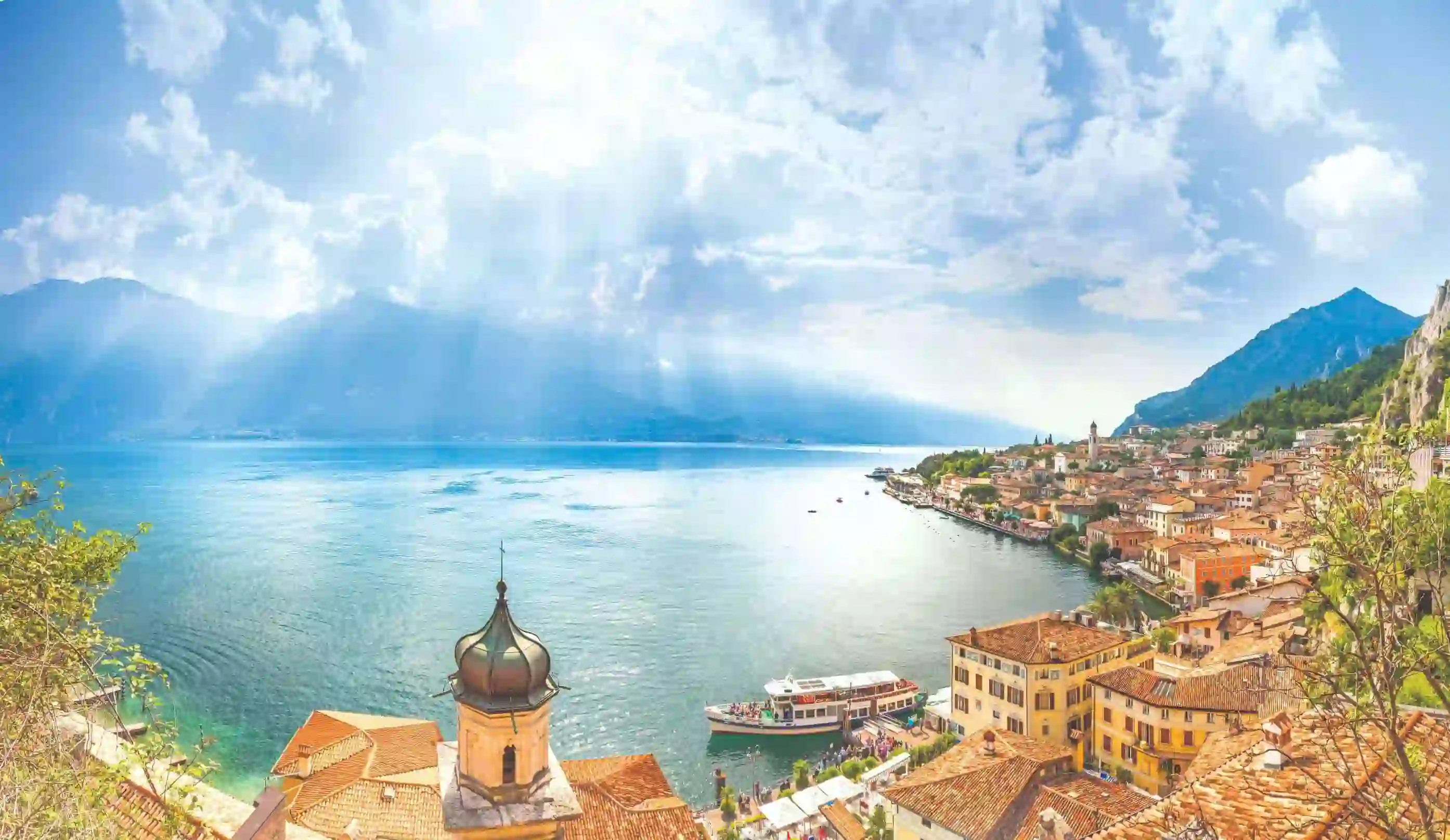
Best Time to Visit Italy
Planning a trip to Italy and wondering when to go? True, Italy is beautiful at any time of the year, but there are, of course, other factors to take into consideration. Weather, crowds, prices and festivities can all affect your trip, and these elements can vary from place to place and region to region. So, when is it hottest in Italy? Of course, the climate in each destination will vary, but July and August are the warmest months throughout the country. You’ll find that the low and high seasons are largely the same as we're used to throughout Europe, with July and August being the most crowded (and subsequently priciest) months to visit, and November to April generally being quieter.
While the weather will obviously dictate your booking dates if you are planning to soak up the sunshine on one of the country's stunning beaches, general sightseeing offers much more flexibility, and with generally mild winters in much of the country, it may pay to plan your holiday for the low season. There are also festivals and other events that may be worth bearing in mind, either because it is certain to draw thousands of other visitors, or because you would like to immerse yourself in the local traditions and celebrations.
With a variety of factors to consider, we've put together this breakdown of the ideal times to visit the country by region, depending on what you would like to see and do on your holiday. Whether you're planning a trip to visit the cultural attractions of Florence or the beaches of Sardinia, here's our guide to the best time to visit Italy.
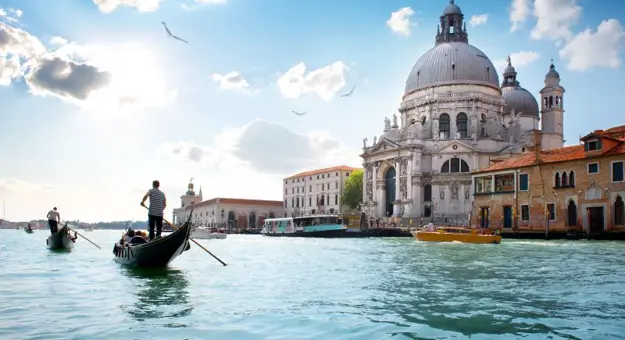
Veneto
As one of Italy's northern regions, Veneto is generally cooler than its southern counterparts. Even in August the average high is around 28°C, so it's still possible to see the sights of Venice and Verona without the fear of overheating in the summer months. The chance of rain is also slim in the summer, and the nights are warm - perfect for enjoying an evening stroll after dinner. In the winter months, the average temperature sits at 8°C, while the shoulder seasons of spring and autumn see averages of 18°C and 20°C, respectively.
Fans of unique festivities may find carnival season the best time to visit Venice - Italy's 'City of Bridges' is filled with masked people in colourful costumes. Taking place over two weeks, usually in February or March, there are a number of events during this time, including parades, balls, concerts and street shows. Of course, with around three million people flocking to the city for the event, this isn't the time to plan a trip to the city for those who dislike crowds. Unsurprisingly for a city so spectacular, there is no real low season in Venice, with visitors from far and wide touring the city throughout the year, but if you're looking for a less crowded and more authentic experience, visiting between November and April is a good idea. This does mean the risk of experiencing the acqua alta, or seasonal flooding, though - particularly in November and December.
Fans of all things festive won't want to miss the chance to visit Verona at Christmas, when the city's squares are transformed with the addition of glimmering lights, Christmas trees and market stalls. If you're visiting Veneto's side of Lake Garda, May to September is a great time to come - the weather is generally warm enough to swim during these months. While July and August do get busy, the peak months offer more in the way of things to do, including boat ride options.
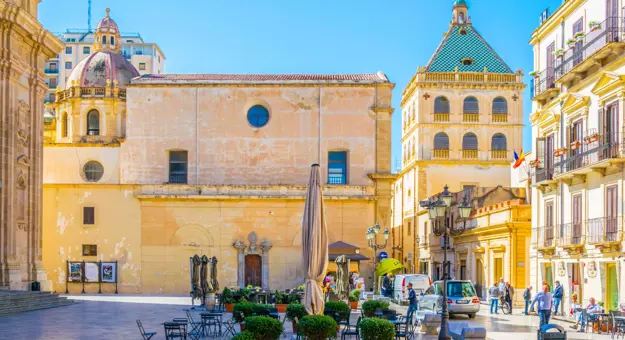
Sicily
Sunseekers will love a break in Sicily. As the hottest region of Italy, the island sees highs of up to 44˚C in August, the hottest month, although the average daily temperature sits closer to 32°C. The island is at its busiest in the peak season of July and August, particularly in places like Cefalu, with many Italians holidaying here in addition to foreign travellers. However, many locals go on holiday in August, so some shops and restaurants will be closed. The mosquitoes can also be quite bothersome at this time of year.
While Sicily is generally considered a beach destination thanks to its long stretches of idyllic coast, the island has more than its fair share of sights and attractions, from ancient ruins to grand cathedrals, making it a great destination at any time of the year. In general, the best time to visit sights like Mount Etna is the shoulder seasons of April and May and September and October. During this time there are fewer crowds, and the heat is less intense. The winter months are generally mild in Sicily, with an average temperature of 10°C, December, January and February, and can be appealing for the chance to see Etna's peak covered in snow. November and December are the wettest months with average rainfall of 67mm and 75mm, respectively, making it a good time to enjoy the island's indoor attractions.
Easter, or Pasqua, is a nice time to visit Sicily, as each town and city hosts its own celebrations and religious events full of colour and tradition. If you happen to be in Sicily in mid-July, you may like to head to Palermo to revel in the city's Festa di Santa Rosalia, which encompasses a large-scale procession plus various other festivities across the city on the 14th and 15th of the month.
Visit Sicily
- Experience a walking tour of Sicily’s capital Palermo
- Spend four nights in a charming hotel beneath fabled Taormina
- Visit Syracuse, rich in Greek and Roman history
- Flights included
8 days from £1,485 pp
was £1,649 pp
Dates Available
April 2026 - October 2027
Duration
8 days
Depart From
6 airports
Excursions & Visits
6 included
Meals
14 included
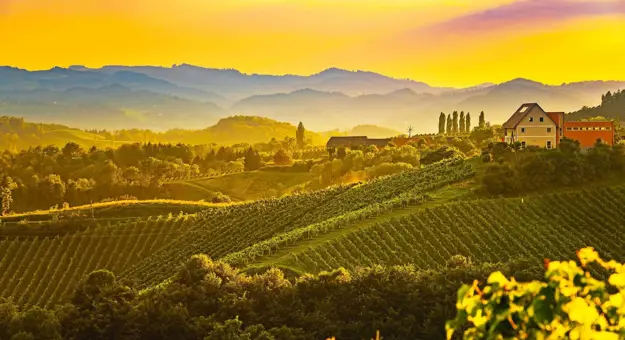
Tuscany
Famed for its rolling countryside, hearty cuisine and culturally rich cities, Tuscany is one of Italy's most favoured regions. Predictably given its Mediterranean climate, July and August are the warmest months in the region, with highest average temperatures of 32°C and 33°C. While these months are the busiest, it's a good time to come to enjoy guaranteed sunshine - and the lowest humidity of the year. The climate does vary geographically, though, with the inland and hilly areas being cooler than the coast. The tourism season is generally from May to late September, when hilltop towns like San Gimignano can be busy.
Perhaps the best time to go to Italy for a wine tour is in the autumn, when the harvest is over, and Tuscany is no exception. Bear in mind, though, that it is often busiest at this time of year, so it's a good idea to book your tour well in advance, or perhaps visit in the summer, when many vineyards actually see fewer visitors. In addition, it's worth remembering that winemakers generally do not offer tours over the winter months. If you're visiting Tuscany for a rural escape, it's best to avoid November and December, which are the region's wettest months with average rainfall of 115mm and 110mm, respectively. You'll find plenty of indoor things to do in cities such as Florence and Pisa during these months, though, and it will be much quieter, with fewer tourists and off-peak prices.
Visit Tuscany
- Visit Portofino, one of the Mediterranean's most exclusive corners
- Spend a day in breath-taking Florence
- Discover the wonderful cities of Pisa and Lucca
- Flights included
8 days from £1,139 pp
was £1,265 pp
Dates Available
April 2026 - October 2027
Duration
8 days
Depart From
10 airports
Excursions & Visits
6 included
Meals
14 included

Dolomites
If you are travelling to Italy with fresh air, unspoilt nature and mesmerising scenery in mind, the Dolomites is an ideal destination. Located in the country's north, this region sees the lowest temperatures in Italy, averaging around 2°C in January. during the daytime and often falling far below 0°C at night. The summer here is pleasant, at around 21°C in August, making it an ideal destination for some respite away from the scorching heat of the cities further south. The bad news is that July and August, along with November, tend to be the wettest months, while June and September are usually the driest. The weather can be quite unpredictable, particularly in the shoulder seasons of spring and autumn, but rain showers tend to be fleeting - often if it rains in the morning, it will brighten up by the afternoon.
The good news is that the Dolomites is really a year-round destination. If you enjoy walking and hiking, summer is a great time to enjoy the warm weather, while spring offers fewer visitors and views of the snow-capped mountains. Autumn is ideal for visiting towns and cities like Trento to experience local life and take advantage of the historical and cultural attractions they offer. Winter is the season for ski enthusiasts, but also provides the magical experience of enjoying Christmas in the Dolomites, when towns like Ortisei and Bolzano - dubbed the ‘Italian Capital of Christmas’ - are transformed into fairytale-esque hubs for festivities.

Lombardy
This northern region offers hot summers and warm springs and autumns, with winter being a little chilly. The hottest month tends to be July, with highs of around 30°C, while January is the coldest, with an average daily temperature of 6°C, often dropping below 0°C during the night. If you plan on travelling in August, bear in mind that it can be rainy in the region, with an average rainfall of 66mm. The wettest month overall is November, with average rainfall of 123mm, followed by September and October.
The region's glimmering gem, Lake Como, retains its sense of magic year-round. In the summer months of July and August, the warmer temperatures provide the perfect opportunity to take advantage of lake swims, boat cruises, and lazy days relaxing by the shore, although the area is also at its busiest this time of the year. Spring and autumn at the lake offer pleasant weather and fewer crowds, but it may be a little too cool for swimming. Spring is generally the best time to visit the area's renowned gardens, and if you're here for the last Saturday of June you'll be able to catch the fireworks and festivities of Fuochi Lariani. From November until March, the temperature drops - as do the crowds. The winter months bring a romantic atmosphere to the lake, with snow blanketing the surrounding mountain peaks, and the villages transformed into festive wonderlands with twinkling lights and traditional markets at Christmas.
It can be said that Milan doesn't have a true tourist season - Lombardy's capital attracts travellers throughout the year. When it comes to the best time to visit Italy's fashion capital, however, the months of April, May and June are particularly pleasant, with less chance of rain, comfortable temperatures, sunny weather, and fewer tourists. July and August offer almost guaranteed hot temperatures, but it can also be crowded and stormy. October to January is the cheapest time to visit, but you will probably have to contend with at least one rain shower.
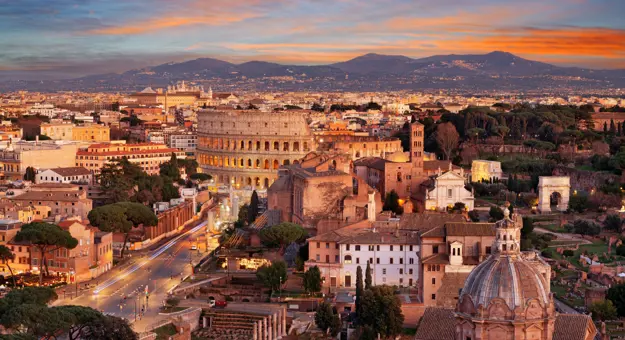
Lazio
As the home of the country's capital city, the Lazio region is one of Italy's most visited. The weather in Rome is typically Mediterranean, with hot, dry summers and cool winters. Temperatures can soar to 30°C in July and August, and there is little worry of rain during these months, although this is when the city is at its most crowded, resulting in long queues at its attractions and busy restaurants. Winter can be chilly here, with lows of 2°C in January, and the months of November and December see average rainfall of 90mm.
While the spring is often hailed as the best time to visit Rome, Italy's capital gets crowded at Easter due to the influx of pilgrims passing by on their way to the Vatican City, and keep in mind that the city's attractions will also be closed Easter Sunday and Easter Monday. Easter aside, April to June and September to November are generally good periods for sightseeing in Rome, with comfortable weather and fewer crowds. While November to February can be chilly, the city's plethora of indoor attractions will keep you out of the cold, and you'll also benefit from cheaper prices and a (slightly!) quieter city. If you plan to make the day trip over to the Vatican during the winter, keep in mind that the holidays of Christmas Eve, Christmas Day, and New Year's are likely to draw lots of visitors.
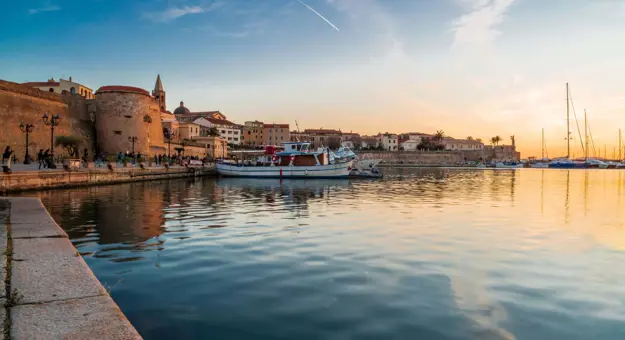
Sardinia
Italy's second-largest island offers 2000km of sandy coastline, making it an ideal summer destination. July and August are generally hot, with highs of around 32°C, although the island has its fair share of wind which prevents the heat from becoming too overwhelming. Unsurprisingly, this is Sardinia’s busiest time of the year, both with foreign travellers and Italians from the mainland. June and early September are also busy (and therefore pricey).
For those looking to avoid the crowds while still having the chance to enjoy the island's beautiful beaches, the ideal times to visit are the shoulder seasons of spring and autumn, and the good news is that the island remains warm for much of the year, so even visiting in April or October can mean serene days lazing on superb beaches like La Pelosa. It's also a good time to take advantage of Sardinia's other outdoor activities, including hiking, fishing, or exploring fishing villages like Stintino or archaeological sites like the Bronze age settlement of Su Nuraxi di Barumini. The winters are generally mild on Sardinia, with highs of 15°C and 14°C in December and January, respectively, although there is more chance of rain at this time of year - November tends to be the wettest month, with average rainfall of 69mm. From November to February many beach resorts and tourism operators shut up shop, giving the island a more 'local' feel.
If you'd like to experience Sardinia's fascinating traditions, one of the best times to visit is Easter, when towns and villages all over the island celebrate with a wave of colour, processions and parties. Another important and wonderfully atmospheric festival is the Cavalcata Sarda, held every May, where locals from all over the island descend on the city of Sassari in colourful traditional dress, and many on horseback, for the biggest party on the island.
Visit Sardinia
- Gaze at the Basilica della Santissima Trinità di Saccargia, with its striking façade
- Stop off in the hilltop town of Bosa and sightsee from a local shuttle train
- Visit the Coral Museum of Alghero
- Flights included
8 days from £1,526 pp
was £1,695 pp
Dates Available
April 2026 - October 2027
Duration
8 days
Depart From
5 airports
Excursions & Visits
7 included
Meals
12 included

Puglia
If you're planning a beach holiday, generally speaking, the best time to visit Italy for guaranteed sunshine and warm seas is the summer. While this is also the busiest time of the year, the good news is that Puglia is still relatively less visited than other regions in the country. July and August see average highs of around 30°C, although the prices also see an increase at this time of the year. If you are able to travel outside of the peak season, you'll find your options are numerous, as many parts of the region remain warm well into October. The weather (and sea temperature) starts to heat up in May, and by June the real beach weather arrives. June is also the driest month, with just 2mm average rainfall.
If you want to spend your time doing more outdoorsy things, such as walking and cycling, spring and autumn are ideal, although be prepared for the possibility of rain in April and October. November tends to be the wettest month, with December and January not far behind. This is still a good time to visit though, if only to experience the Carnevale di Putignano. Said to be the world's longest carnival, it runs from Boxing Day to Shrove Tuesday, and features impressive floats, colourful costumes and masks aplenty. Other chances to partake in local festivities include the Alberobello Light Festival in July and the jazz season, which runs from June to August. Summer, and particularly July, is also a good time to visit the hilltop town of Ostuni, when you can enjoy the traditional festivities and parties in the warm weather.
Italy is a stunning destination all year round, with plenty of activities and attractions to be enjoyed both indoors and outdoors. Hopefully this guide has shed a bit of light on the pros and cons of planning a visit to Italy during the low, shoulder and high seasons. While it's never possible to predict the weather by month in Italy, it's always useful to have a general idea of what to expect, weather and crowd-wise, before you book your flights. Keep in mind that carnivals, festivals, and religious celebrations can also impact your holiday, so whether you want to avoid the crowds or join the fun, it's a good idea to know the dates beforehand.
Discover our blog
Inside our itineraries: Talking wish-list Italian escapes with a customer
Find out how one of our customer’s childhood dreams came true on their recent visit to the enchanting Italian Lakes with the latest addition to our Q&A series.
No-sweat summer breaks: Our top five holiday hotspots in cooler climates
Make the most of the summer sun without feeling the heat on a trip to some of Europe’s finest mild-weather destinations.
Full steam ahead: Our top five wish-list rail journeys across the world
From the idyllic Italian countryside to travelling on a high-speed bullet train through Japan, your next unforgettable adventure is ready to depart!



